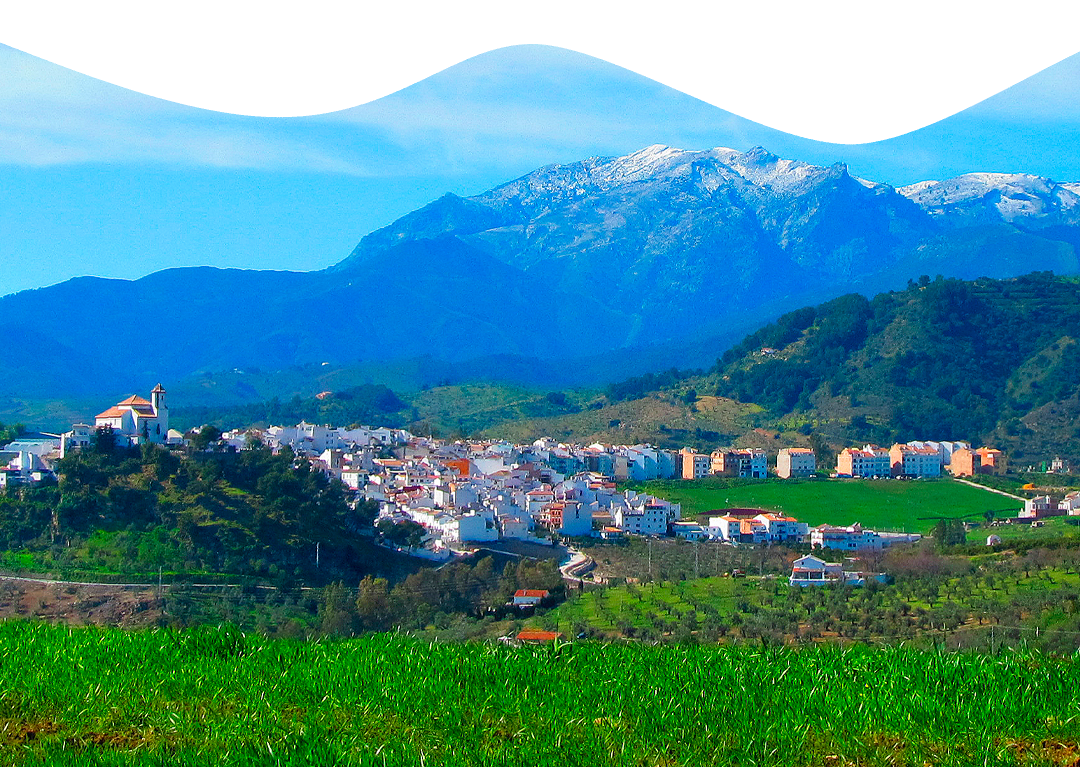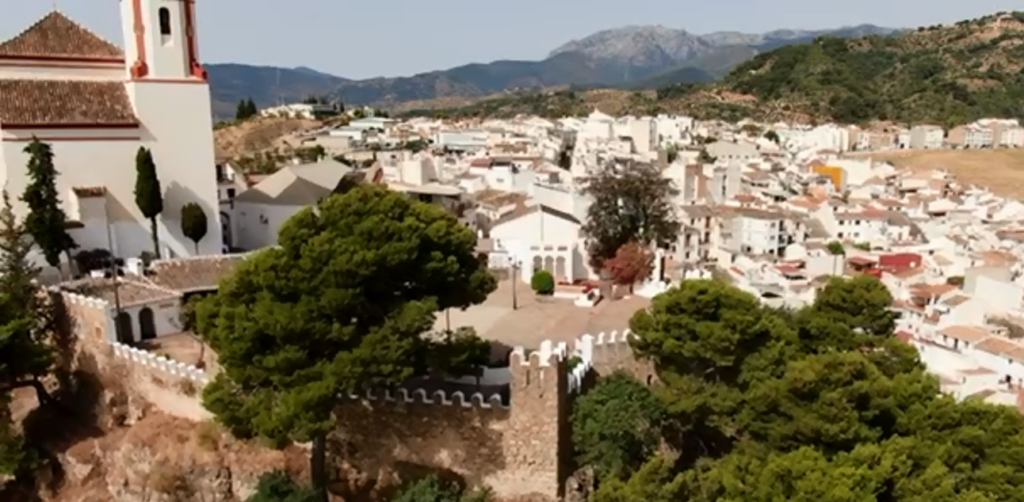


¿Sabes dónde queda la ruta patrimonial de Alozaina? Este pequeño pueblo es uno de los más visitados. En él encontrarás varios restaurantes y bares en los que podrás descansar. ¿Por qué no disfrutar de un buen fin de semana en esta típica población? Si estás en búsqueda de un buen destino para disfrutar, llegaste al lugar indicado.

La ruta patrimonial de Alozaina se desarrolla durante 3 días, los cuales son: 3,4 y 5 de noviembre. Tiene talleres y espacios creativos abiertos al público y dispone de un mapa en el Aula Municipal de Cultura que está junto a la Oficina de Turismo. Esta población también es conocida como “Pequeño Castillo” y es uno de las más privilegiadas por su entorno natural.
El “Pequeño Castillo” se ubica entre la Serranía de Ronda y el Valle del Guadalhorce. Es un pequeño municipio al noroeste de la provincia de Málaga. Y cuenta con las siguientes rutas patrimoniales:
1.La Fuente del Albar
Nos encontramos con uno de los entornos más privilegiados. La Fuente del Albar está ubicada en la calle Calzada, en la salida del casco urbano de la población. Esta fuente ha abastecido a la zona por décadas. Esto se debe a una construcción árabe de época medieval que proporciona una infraestructura hidráulica.
Tiene un acueducto hecho de piedra, vinculado al pueblo. En sus orígenes fue hecha para abastecer de agua al castillo (actualmente la Iglesia Parroquial de Santa Ana) y a la Villa de Alozaina. Tiene un aspecto diferente, ya que fue reconstruida a mitad del siglo XX.
Este complejo arqueológico con extraordinaria importancia fue excavado en la roca. Está hecha de piedra, ladrillo y cal y ha sido rematada con una punta de frontón triangular en la que se encuentra una cruz. Su caudal es muy bajo. Sin embargo, cuenta con dos caños que se utilizan para abrevar al ganado del pueblo.
2.Iglesia de Santa Ana
Si buscas algo más que ver en este pequeño pueblo, la Iglesia de Santa Ana es una buena opción. Lo más destacado de ella es su paisaje serrano, con su imponente torreón de planta octogonal. La iglesia parroquial se encuentra ubicada en la Sierra de las Nieves y fue fundada en 1489, de 1494 se encuentran constancias de Santa Ana como titular.
El templo data del siglo XVIII ,y para construirlo se utilizaron partes del edificio anterior. La obra fue llevada a cabo por el maestro arquitecto Felipe Pérez entre 1770 y 1774. Hasta el día de hoy mantiene su estilo barroco. Una de las fiestas más destacadas son las patronales, que se celebran el 25 y 26 de julio. También tiene múltiples sacramentos y asociaciones.
Tiene pinturas restauradas al fresco que datan del siglo XVII. Su entrada principal se destaca por una fachada principal de ladrillo con inscripciones en azulejos que recuerdan la conquista de la población. Tiene una planta cruz latina con una tribuna pequeña sobre un arco rebajado. En los brazos de crucera están dos capillas que abren dos sendos camarines.
El edificio descubre una silueta imponente en su exterior. Puesto que está hecho de mampostería adornada con arcos de medio punto. Esta magnífica construcción desafía la inercia de las leyes de gravedad. Se ve encaramada a lo alto de una peña, mostrando una fusión armónica del templo en todo su entorno. ¿Te gustaría visitar una iglesia volante entre nubes?
En la ruta patrimonial de Alozaina también tenemos el Lavadero Municipal. Se encuentra ubicado en la calle de la Calzada, una calle que baja desde el pueblo hasta el cauce del Río Pesadilla. Está junto a la fuente del Albar para abastecerlo de agua. Data del año 1949 y fue construida para facilitar a los vecinos del pueblo labores cotidianas en los arroyos próximos del Albar.
Tiene 12 lebrillos y se utilizó hasta los años 70. Su aspecto es producto de reformas hechas con un cuidadoso pulido que embellece y mantiene el patrimonio del sitio. A pesar de haber sufrido algunas modificaciones, sigue conservando todo su encanto y belleza antiguos.
La primera vez que se menciona fue en la época de Nazarí y está situado al pie de la Iglesia Santa Ana. Formó parte del castillo medieval y fue transformado en el siglo XX en un mirador con una plaza abierta con jardines donde se celebran eventos. Contempla un paisaje sin fin y amplio, señalando una buena parte del Valle del Guadalhorce y el inicio de la Sierra de las Nieves.
Con el propósito de reconstruir la antigua fortaleza, fue construido como un recinto amurallado, con escenario, barra de hormigón, torres y almenas. A pesar de que no responde a la construcción original, te ayuda a imaginar cómo podían sentirse los antepasados al caminar por las murallas.
Cuenta la historia que en el año 1570 una tropa de 600 hombres acaudillados iniciaron una marcha con intenciones de asaltar la villa. Con escuadrones de 8 filas atacaban a 80 vecinos, los cuales tomaron sus armas y subieron al castillo para defenderlo.
En el enfrentamiento hubo muertos y heridos, entre esos heridos estaba el padre de María Sagredo. La cual al ver la situación se subió en lo alto de un torreón a defender bravamente. Cuando los asaltantes se encontraban al pie del torreón, defendió la villa arrojando colmenas de abejas en la que los sitiadores emprendieron la fuga. De allí proviene el nombre de dicha estructura.
Este es el principal vestigio del antiguo castillo y está a pocos metros de la Iglesia Parroquial. Está integrado con las viviendas actuales de la localidad, sobresale de los muros y tiene una forma cónica con grandes bloques de piedra tallada.
La ruta patrimonial de Alozaina tiene un gran significado histórico para la población. La estructura de cada una de sus edificaciones históricas es heredada de un origen musulmán. Con fachadas relucientes, calles pendientes y escondidos rincones. Cada uno de sus sitios con rasgos de época medieval son dignos de visitar y de admirar.
We firmly believe that the internet should be available and accessible to anyone, and are committed to providing a website that is accessible to the widest possible audience, regardless of circumstance and ability.
To fulfill this, we aim to adhere as strictly as possible to the World Wide Web Consortium’s (W3C) Web Content Accessibility Guidelines 2.1 (WCAG 2.1) at the AA level. These guidelines explain how to make web content accessible to people with a wide array of disabilities. Complying with those guidelines helps us ensure that the website is accessible to all people: blind people, people with motor impairments, visual impairment, cognitive disabilities, and more.
This website utilizes various technologies that are meant to make it as accessible as possible at all times. We utilize an accessibility interface that allows persons with specific disabilities to adjust the website’s UI (user interface) and design it to their personal needs.
Additionally, the website utilizes an AI-based application that runs in the background and optimizes its accessibility level constantly. This application remediates the website’s HTML, adapts Its functionality and behavior for screen-readers used by the blind users, and for keyboard functions used by individuals with motor impairments.
If you’ve found a malfunction or have ideas for improvement, we’ll be happy to hear from you. You can reach out to the website’s operators by using the following email
Our website implements the ARIA attributes (Accessible Rich Internet Applications) technique, alongside various different behavioral changes, to ensure blind users visiting with screen-readers are able to read, comprehend, and enjoy the website’s functions. As soon as a user with a screen-reader enters your site, they immediately receive a prompt to enter the Screen-Reader Profile so they can browse and operate your site effectively. Here’s how our website covers some of the most important screen-reader requirements, alongside console screenshots of code examples:
Screen-reader optimization: we run a background process that learns the website’s components from top to bottom, to ensure ongoing compliance even when updating the website. In this process, we provide screen-readers with meaningful data using the ARIA set of attributes. For example, we provide accurate form labels; descriptions for actionable icons (social media icons, search icons, cart icons, etc.); validation guidance for form inputs; element roles such as buttons, menus, modal dialogues (popups), and others. Additionally, the background process scans all of the website’s images and provides an accurate and meaningful image-object-recognition-based description as an ALT (alternate text) tag for images that are not described. It will also extract texts that are embedded within the image, using an OCR (optical character recognition) technology. To turn on screen-reader adjustments at any time, users need only to press the Alt+1 keyboard combination. Screen-reader users also get automatic announcements to turn the Screen-reader mode on as soon as they enter the website.
These adjustments are compatible with all popular screen readers, including JAWS and NVDA.
Keyboard navigation optimization: The background process also adjusts the website’s HTML, and adds various behaviors using JavaScript code to make the website operable by the keyboard. This includes the ability to navigate the website using the Tab and Shift+Tab keys, operate dropdowns with the arrow keys, close them with Esc, trigger buttons and links using the Enter key, navigate between radio and checkbox elements using the arrow keys, and fill them in with the Spacebar or Enter key.Additionally, keyboard users will find quick-navigation and content-skip menus, available at any time by clicking Alt+1, or as the first elements of the site while navigating with the keyboard. The background process also handles triggered popups by moving the keyboard focus towards them as soon as they appear, and not allow the focus drift outside of it.
Users can also use shortcuts such as “M” (menus), “H” (headings), “F” (forms), “B” (buttons), and “G” (graphics) to jump to specific elements.
We aim to support the widest array of browsers and assistive technologies as possible, so our users can choose the best fitting tools for them, with as few limitations as possible. Therefore, we have worked very hard to be able to support all major systems that comprise over 95% of the user market share including Google Chrome, Mozilla Firefox, Apple Safari, Opera and Microsoft Edge, JAWS and NVDA (screen readers), both for Windows and for MAC users.
Despite our very best efforts to allow anybody to adjust the website to their needs, there may still be pages or sections that are not fully accessible, are in the process of becoming accessible, or are lacking an adequate technological solution to make them accessible. Still, we are continually improving our accessibility, adding, updating and improving its options and features, and developing and adopting new technologies. All this is meant to reach the optimal level of accessibility, following technological advancements. For any assistance, please reach out to